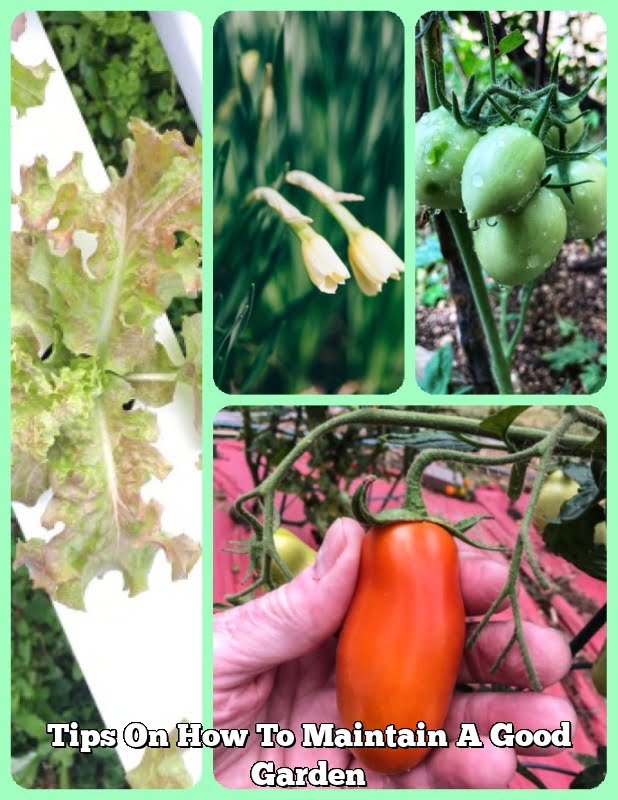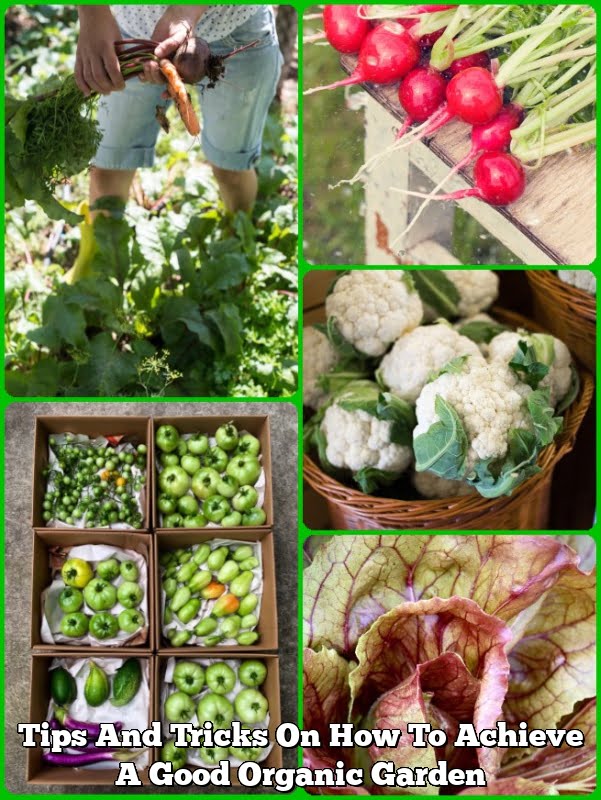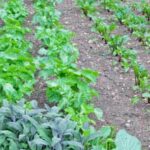Are you looking for some good vegetable gardening tips to start your own garden? Vegetable gardening is a wonderful hobby that can bring many benefits, including providing fresh and healthy produce for your family, saving money on groceries, and enjoying the therapeutic benefits of being close to nature.
Whether you have a big backyard or just a small balcony, anyone can enjoy the rewards of growing their own vegetables. In this article, we will discuss some essential tips and techniques to help you get started with successful vegetable gardening.
When it comes to starting a vegetable garden, one of the most important factors to consider is choosing the best location. The right location can make a significant difference in the success of your garden. We will provide guidance on factors such as sunlight, water drainage, and proximity to the kitchen for easy access.
In addition to location, proper soil preparation and conditioning are crucial for a thriving vegetable garden. We will explore different methods for enriching the soil with nutrients and improving its texture to create an optimal environment for your vegetables to grow. Stay tuned for expert advice on selecting vegetables that are best suited for your climate and soil type, as well as recommendations for essential tools and equipment needed for efficient vegetable gardening.
Choosing the Best Location for Your Vegetable Garden
When it comes to starting a vegetable garden, one of the first things to consider is choosing the best location for your garden. The right location can make a big difference in the success of your vegetable crops. Here are some important factors to keep in mind when selecting the perfect spot for your vegetable garden.
Sunlight Exposure
One of the most critical factors for a successful vegetable garden is sunlight exposure. Most vegetables need at least 6-8 hours of direct sunlight each day to thrive. When choosing a location for your garden, look for an area that receives ample sunlight throughout the day. Avoid areas that are shaded by buildings or large trees, as this can result in poor growth and lower yields.
Soil Conditions
Another important consideration when choosing a location for your vegetable garden is the soil conditions. Vegetables thrive in well-draining, nutrient-rich soil. Test the soil pH and fertility levels before choosing a location for your garden. Additionally, avoid areas with compacted or waterlogged soil, as this can lead to poor root development and plant health.
Accessibility and Water Source
Lastly, consider the accessibility of your chosen location and its proximity to a water source. You’ll want to choose a spot that is easy to access for planting, weeding, and harvesting. Additionally, having a nearby water source will make watering your garden more convenient and efficient.
By considering these factors when choosing the best location for your vegetable garden, you’ll be setting yourself up for success from the very beginning. Good vegetable gardening tips emphasize the importance of selecting an appropriate site for optimal plant growth and bountiful harvests.
Soil Preparation and Conditioning Tips for a Successful Vegetable Garden
One of the most important aspects of successful vegetable gardening is soil preparation and conditioning. The quality of your soil will directly impact the health and productivity of your plants, so it is crucial to take the time to properly prepare and condition your garden bed before planting. Here are some good vegetable gardening tips to ensure that your soil is in top-notch condition for growing a bountiful harvest.
First and foremost, it’s essential to test the pH level of your soil. Most vegetables prefer a slightly acidic soil with a pH between 6.0 and 7.0. Testing kits are readily available at garden centers and can help you determine if any adjustments need to be made to achieve the optimal pH for your chosen vegetables.
In addition to pH levels, it’s important to assess the texture and structure of your soil. Ideally, vegetable garden soil should be loose, well-draining, and rich in organic matter. If your soil is compacted or lacks sufficient nutrients, consider incorporating compost or well-rotted manure to improve its overall quality. This will not only provide essential nutrients but also promote healthy root development for your plants.
Lastly, consider utilizing raised beds for your vegetable garden. Raised beds offer several advantages, including better drainage, improved soil quality, and fewer weed problems. They also provide an opportunity to fill with high-quality soil mixtures tailored specifically for growing vegetables, giving you more control over the growing conditions.
| Aspect | Details |
|---|---|
| pH Level Testing | Test the pH level of the soil using a testing kit to ensure proper acidity levels. |
| Soil Texture Assessment | Check the texture and structure of your soil; make necessary adjustments by adding compost or well-rotted manure. |
| Raised Beds | Consider using raised beds for better drainage, improved soil quality, and less weed problems. |
Selecting the Right Vegetables for Your Climate and Soil Type
When it comes to vegetable gardening, one key factor for success is selecting the right vegetables for your specific climate and soil type. This ensures that your plants have the best chance of thriving and producing a bountiful harvest. Here are some important considerations to keep in mind when choosing which vegetables to grow in your garden.
Understanding Your Climate
Before deciding which vegetables to plant, it’s crucial to understand the climate of your region. Take note of the average temperature range, frost dates, and overall weather patterns. This information will help you determine which vegetables are best suited for your area.
For example, if you live in a cooler climate with shorter growing seasons, focus on cold-hardy vegetables such as broccoli, carrots, and kale. On the other hand, if you have a long and warm growing season, consider heat-loving crops like tomatoes, peppers, and eggplant.
Assessing Your Soil Type
Another important factor to consider is the type of soil in your garden. Different vegetables have varying soil preferences, so it’s essential to assess whether you have sandy, loamy, or clay soil. Additionally, testing the pH level of your soil can provide valuable insights into which vegetables will thrive in your garden. For instance, acidic-loving plants like potatoes and blueberries require lower pH levels, while alkaline-loving crops such as spinach and lettuce prefer higher pH levels.
Matching Vegetables to Your Climate and Soil Type
Once you have a good understanding of your climate and soil type, research which vegetables are well-suited for these conditions. There are numerous resources available that provide detailed lists of vegetables categorized by their adaptability to different climates and soil types. By carefully selecting the right vegetables for your specific situation, you’ll set yourself up for a successful and productive vegetable garden.
By taking these factors into account when choosing which vegetables to grow in your garden, you can ensure that your plants will flourish and yield an abundant harvest. These good vegetable gardening tips will help you make informed decisions about the best crops to cultivate based on your unique climate and soil conditions.
Essential Tools and Equipment for Vegetable Gardening
When it comes to vegetable gardening, having the right tools and equipment can make all the difference in the success of your garden. One of the most essential tools for any vegetable gardener is a good quality hand trowel. This small tool is perfect for transplanting seedlings, planting small seeds, and working in tight spaces.
Another must-have tool is a sturdy garden hoe for weeding and cultivating the soil. A pair of high-quality pruning shears is also important for maintaining healthy plants by trimming and harvesting.
In addition to hand tools, investing in some essential equipment can also greatly benefit your vegetable garden. An adjustable sprinkler or hose attachment with a mist setting will help ensure your plants receive adequate water without being overwatered. An accurate soil pH meter and moisture meter are useful for monitoring the conditions of your soil, allowing you to make any necessary adjustments to provide optimal growing conditions for your vegetables.
Lastly, having protective gear such as gardening gloves, a wide-brimmed hat, and sunscreen will help keep you comfortable and protected while working in your vegetable garden.
| Tool/Equipment | Usage |
|---|---|
| Hand Trowel | Transplanting seedlings, planting small seeds, working in tight spaces |
| Garden Hoe | Weeding and cultivating the soil |
| Pruning Shears | Trimming and harvesting plants |
Planting and Caring for Your Vegetable Garden Throughout the Growing Season
Once you’ve chosen the best location for your vegetable garden and prepared the soil, it’s time to start planting and caring for your vegetables throughout the growing season. Here are some good vegetable gardening tips to help you maintain a healthy and thriving garden:
1. Planting: When planting your vegetables, make sure to follow the spacing recommendations on seed packets or plant tags. Proper spacing allows plants to receive adequate sunlight, air circulation, and nutrients from the soil. Consider using companion planting techniques to maximize space and naturally repel pests.
2. Watering: Proper watering is crucial for a successful vegetable garden. Vegetables typically need about 1-2 inches of water per week, either from rainfall or irrigation. It’s best to water in the morning to ensure that plants have enough moisture throughout the day. Mulching around plants can help retain soil moisture and reduce the frequency of watering.
3. Fertilizing: Regular fertilization will provide your vegetables with essential nutrients for healthy growth and high yields. Consider using organic fertilizers such as compost, manure, or fish emulsion to nourish your plants without harmful chemicals.
4. Pruning and Training: Some vegetables, such as tomatoes and cucumbers, benefit from pruning and training to encourage better growth and fruit production. Remove suckers from tomato plants and use trellises or cages to support vining crops like cucumbers and peas.
By following these good vegetable gardening tips, you’ll be well on your way to enjoying a bountiful harvest of fresh, homegrown produce throughout the growing season.
Common Pest and Disease Management Techniques for Vegetable Gardens
Vegetable gardening can be a fulfilling and rewarding hobby for anyone, but it does come with its challenges, including pests and diseases that can threaten the health of your plants. Here are some good vegetable gardening tips for managing common pests and diseases in your garden:
- Identify the problem: Regularly inspect your plants for any signs of pest infestations or disease. Look for chewed leaves, discoloration, wilting, or any unusual growth patterns. Identifying the issue early on can help you take action before it gets out of control.
- Natural pest control methods: Consider using natural and organic pest control methods such as handpicking pests off the plants, introducing beneficial insects like ladybugs or lacewings, or using homemade sprays with ingredients like neem oil or garlic to deter pests.
- Proper watering and spacing: Overwatering can make your plants more susceptible to certain diseases, so it’s essential to water at the base of the plants and avoid getting their foliage wet. Additionally, proper spacing between plants can improve air circulation and reduce the risk of disease spread.
In addition to these tips, it’s important to stay vigilant and take proactive measures to prevent pests and diseases in your vegetable garden. By implementing these good vegetable gardening tips for pest and disease management, you can help ensure a bountiful harvest of healthy and thriving vegetables.
Harvesting and Preserving Your Homegrown Vegetables for Optimal Flavor and Nutrition Benefits
In conclusion, successful vegetable gardening requires a combination of knowledge, patience, and dedication. By following the good vegetable gardening tips outlined in this article, you can enjoy the satisfaction of growing your own fresh and healthy produce. From selecting the best location for your garden to harvesting and preserving your homegrown vegetables, each step is crucial to ensuring a bountiful harvest.
It is important to remember that harvesting at the right time is key to achieving optimal flavor and nutrition benefits from your homegrown vegetables. Take care to harvest fruits and vegetables when they are ripe but still firm. Additionally, proper storage and preservation methods such as canning, freezing, or drying will allow you to enjoy your harvest long after the growing season has ended.
By continuing to educate yourself on good vegetable gardening tips and techniques, you can enhance your skills and improve your gardening experience year after year. Whether you are a seasoned gardener or just starting out, there is always something new to learn and try in the realm of vegetable gardening. So get out there, roll up your sleeves, and enjoy the journey of growing your own delicious and nutritious vegetables. Happy gardening.
Frequently Asked Questions
How Can I Improve My Vegetable Garden?
You can improve your vegetable garden by starting with healthy soil. Adding compost and organic matter will enrich the soil and provide essential nutrients for your plants. Proper spacing, regular watering, and timely pest control are also important for a thriving vegetable garden.
What Is the Best Way to Plant a Vegetable Garden?
The best way to plant a vegetable garden is to first choose the right location with plenty of sunlight and good drainage. Plan out your garden layout to ensure proper spacing between plants. Planting in raised beds or containers can also help provide optimal growing conditions for your vegetables.
What Helps Veggies Grow?
Several factors can help veggies grow successfully. Providing the right amount of water, sunlight, and nutrients is crucial for healthy plant growth. Additionally, practicing crop rotation, using mulch to conserve moisture and prevent weeds, and controlling pests and diseases are all essential for promoting healthy vegetable growth.

If you’re looking to get into vegetable gardening, or are just looking for some tips on how to make your current garden better, then you’ve come to the right place! My name is Ethel and I have been gardening for years. In this blog, I’m going to share with you some of my best tips on how to create a successful vegetable garden.





